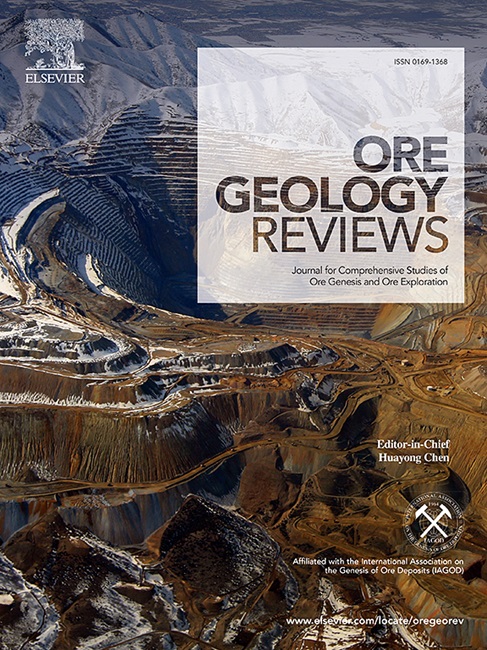Attention-driven graph convolutional neural networks for mineral prospectivity mapping
IF 3.2
2区 地球科学
Q1 GEOLOGY
引用次数: 0
Abstract
Mineral Prospectivity Mapping (MPM) is a fundamental technique in the field of geosciences for identifying regions with high mineral potential. Graph Neural Networks (GNNs) have been extensively utilized in MPM, particularly excelling in handling non-Euclidean spatial data, effectively addressing the limitation of traditional deep neural networks, which struggle to capture and utilize spatial information. However, they often rely on direct geographic connections, which limit their ability to recognize long-distance geological relationships. This constraint impacts the understanding of mineralization processes and prediction accuracy, while feature smoothing in multi-layer graph convolution operations further weakens the aggregation of distant features. To address these challenges, this study proposes an Attention-Driven Graph Convolutional Network (ADGCN) that leverages an attention mechanism to select highly correlated nodes for connection and aggregates features from distant nodes for representation learning. Building upon the spatial information-capturing capabilities of traditional Graph Neural Networks, ADGCN further optimizes the process by dynamically prioritizing critical nodes, capturing complex spatial patterns and nonlinear relationships while alleviating feature smoothing and enhancing the aggregation of geographically distant but geologically related units. In tests conducted in the Lhasa region, ADGCN achieved an AUC of 91.67%, surpassing GAT by 2.65%, demonstrating superior prediction accuracy in MPM.

求助全文
约1分钟内获得全文
求助全文
来源期刊

Ore Geology Reviews
地学-地质学
CiteScore
6.50
自引率
27.30%
发文量
546
审稿时长
22.9 weeks
期刊介绍:
Ore Geology Reviews aims to familiarize all earth scientists with recent advances in a number of interconnected disciplines related to the study of, and search for, ore deposits. The reviews range from brief to longer contributions, but the journal preferentially publishes manuscripts that fill the niche between the commonly shorter journal articles and the comprehensive book coverages, and thus has a special appeal to many authors and readers.
 求助内容:
求助内容: 应助结果提醒方式:
应助结果提醒方式:


